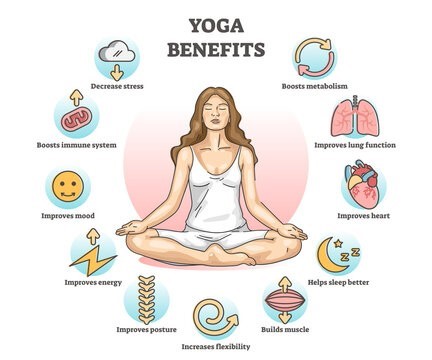Celebrating International Day of Yoga on June 21…
As the world celebrates International Day of Yoga on June 21, we spoke to Dr Amit Dias and asked him the health benefits of yoga. He simplified them for us and also elaborated on the Y-Break@workplace protocol promoted by the government. “We need to promote these `Mindful Movements’ for self as well as society,” he says.
An interview with Dr Amit Dias
Goan Observer: Doctor, let’s start by understanding the importance of doing yoga.
Dr Amit Dias: Yoga helps in achieving a healthy mind and a healthy body. In today’s world there is so much stress and we need to have tools to be able to counter it. I call it the “Mindful Movements” that must be incorporated into everyday life. Yoga has been included as part of the cognitive exercises at Memory Cafe for seniors and we have seen an encouraging response. This year the government has promoted Y- Break@workplace in view of the rising levels of workplace stress.
Q: Could you throw more light on Y-Break?
A: Y-Break@workplace protocol is devised to help professionals de-stress, refresh and refocus by taking a yoga break. It consists of a few light practices that can be performed by taking a short break from work. It includes the postures (asanas) as well as pranayama (breathing exercises) and meditation. They have explained some simple chair yoga techniques that can be easily followed. I would encourage you to check it out on YouTube.
Q: What are your plans for International Day of Yoga?
A: Yoga should not be observed just for one day. It should be a daily or routine habit. Doing it just for fun and a photo opportunity on International Day of Yoga (IDY) will not yield any benefits. I like the new series on Yoga by Saurabh Bothra. I joined his attempt to break the world record today. I would encourage all of you to join as well. We observed IDY with our staff and patients at the Urban Health Center at St Cruz.
B: At the Memory Cafe we have our very own instructor, Babita Suvarna, from Mahim. She willingly volunteers her services and guides our seniors every Monday on various yoga techniques to promote better cognition and health. She was a banking professional who opted for fitness through yoga over her banking job.
To motivate people to do yoga, they need to know why they have to do it and its health benefits.
Q: Could you elaborate on the health benefits of practicing yoga?
A: Yoga offers a wide range of health benefits, encompassing physical, mental and emotional wellbeing.
Physical Benefits: Flexibility and Range of Motion: Yoga postures (asanas) stretch and lengthen muscles, promoting flexibility and enhancing range of motion. This can improve posture and reduce the risk of injuries.
Strength & Muscle Tone: Many yoga poses require supporting body weight or holding positions, which helps build muscle strength and tone, particularly in the core, arms and legs.
Cardiovascular Health: Certain yoga styles, such as Vinyasa or Power Yoga, can provide a cardiovascular workout, improving heart health and circulation. Vinyasa means “arranging something especially.” In this form, there is a gradual progression that connects one pose with another, unifying breath and movement for a smooth flow.
Balance and Coordination: Practicing balancing poses in yoga enhances coordination and proprioception, which is beneficial for overall physical stability.
Promoting Joint Health: Gentle movements and stretches in yoga can help lubricate joints, improve joint function, and reduce joint pain or stiffness.
Mental and Emotional Benefits:
Stress Reduction: Yoga emphasizes deep, mindful breathing and relaxation techniques, which activate the parasympathetic nervous system and reduce the body’s stress response.
Mood Enhancement: Regular yoga practice has been shown to increase levels of serotonin (the “happy hormone”) and decrease levels of cortisol (the stress hormone), leading to improved mood and overall emotional well-being.
Mindfulness and Awareness: Yoga encourages present-moment awareness and mindfulness, helping practitioners become more attuned to their thoughts, emotions, and physical sensations.
Mental peace: The combination of physical movement, breathing and meditation in yoga promotes a sense of calmness, relaxation and inner peace.
Cognitive Benefits: The practice of mindfulness in yoga enhances cognitive function, including concentration, attention span and mental clarity.
Memory Improvement: Yoga has been linked to improved memory retention and cognitive performance due to its effects on reducing stress and enhancing brain function.
Other Benefits:
Pain reduction: Yoga can alleviate chronic pain conditions such as lower back pain, arthritis, and headaches through improved flexibility, strength, and relaxation.
Immune System Boost: Regular yoga practice has been associated with a stronger immune system, possibly due to reduced stress and improved overall health.
Sleep improvement: The relaxation techniques and stress-reducing benefits of yoga can contribute to improved sleep quality and duration.
Spiritual Benefits:
Deeper Connection: For many practitioners, yoga serves as a spiritual practice that fosters a deeper connection with oneself, others, and the world around them.
Sense of Purpose: Yoga philosophy encourages values such as compassion, gratitude, and self-discipline, leading to a greater sense of purpose and fulfillment.
In conclusion, yoga is a holistic practice that offers numerous health benefits across physical, mental, emotional, cognitive and spiritual dimensions. Whether practiced for physical fitness, stress relief, or spiritual growth, yoga has the potential to enhance overall quality of life and well-being.
To get the benefits one should be regular in practicing the range of exercises involving various muscle groups, as well as pranayama which include breathing techniques or exercises.
Q: What are the various forms of yoga?
A: I do not claim to be an expert on this, but there are various forms of Yoga
Hatha Yoga: It involves physical postures (asanas) and breathing exercises (Pranayam)
Iyengar Yoga: In this form one uses props like straps, weights, and blocks, to achieve the desired position
Bikram Yoga: It’s performed in a very hot room. Involves 26 positions
Kripalu Yoga: this is a gentle, slower style of yoga
Ashtanga Yoga: It’s fast-paced and designed to build your endurance and strength. It is linked with breathing.
Q: Can anyone practice yoga?
A: Yoga is meant for practically everyone, regardless of age, gender and fitness level. Those with some illnesses and injuries should consider avoiding them. Yoga has a range of exercises, one must consult a physician to understand which exercise is best suited for them.

Q: You mentioned that you have introduced yoga for the seniors at the memory cafe, what is your experience?
A: As I said earlier, anyone can practice yoga. We have regular yoga sessions online conducted during our Memory Cafe sessions for seniors, conducted by our expert. We may have to modify the pose to suit people with restricted movements or injuries. They will have to avoid yoga in case of certain conditions such as post-eye surgery, asthma, back injury, very low or very high blood pressure, neck injury, etc. Start slow and increase the intensity.
We had a very good experience with yoga at the Memory Cafe. Here are some quotes that I received as feedback from the sessions which are very encouraging.

Q. OK, here is a tricky one — allopathy and yoga, how do the two mix?
A: Allopathy and yoga complement each other. It is we humans who have divided the systems of medicine. Our aim has always been to achieve holistic health for an individual. While allopathic medicine has the evidence to treat and cure acute health conditions, chronic health conditions, which have a multi-factorial causation, there is need for a multi-dimensional approach when it comes to healthcare management.
While sometimes it seems like the various systems of medicine are at loggerheads and try to compete with each other, we need to understand that the fact is that the various systems could complement each other. That is philosophy too behind health and wellbeing.
Q: Are there an precautions to be taken while doing yoga?
A: Like the medications in allopathy, one needs to know when to take them and for how long. One has to learn the correct position and build up on the exercise regime. There are no side effects doing yoga but there are some asana or positions or poses that may not be suitable for those with certain health problems or age and infirmity and these difficult poses have to be avoided or modified. I have highlighted some of the precautions earlier.
Sometimes one can get some injuries during yoga, such as muscle strain, back injury, glaucoma, musculoskeletal injury, and high blood pressure with forceful breathing. Practicing aggressively and not being aware of the correct technique may be injurious and harmful, there is need to be cautious and alert always.

Q: Could you like to share any message for our readers on International Day of Yoga?
A: Let us get fit together! The theme this year is “YOGA FOR SELF AND SOCIETY.” Yoga is good for health and it is advisable to learn the techniques to improve your health and wellbeing. There are various options available in today’s world — some workshops are conducted online and you may do guided yoga in the comfort of your own home. Several videos are available on YouTube and there are exercise sessions on television that one may follow. Take advantage of this and choose an option that suits you. Wishing everyone a very happy mind, body and soul.

